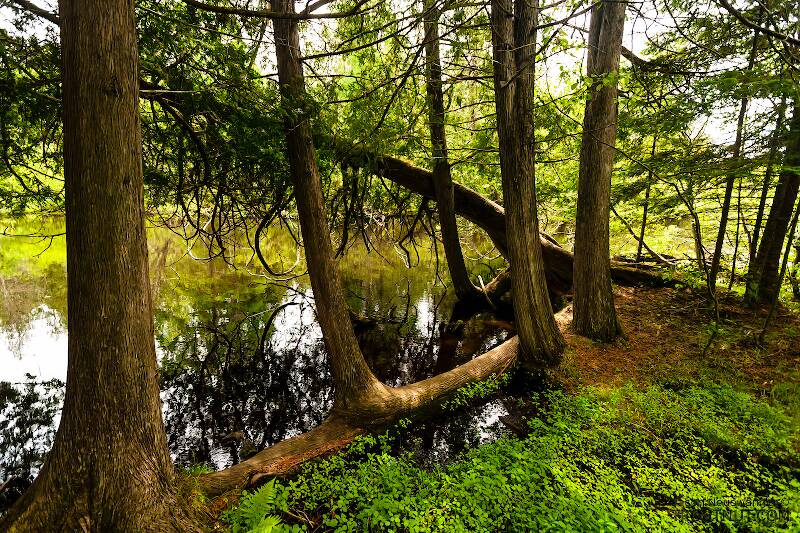
Hex Mayflies
Hexagenia limbata
The famous nocturnal Hex hatch of the Midwest (and a few other lucky locations) stirs to the surface mythically large brown trout that only touch streamers for the rest of the year.
Featured on the forum

Nymphs of this species were fairly common in late-winter kick net samples from the upper Yakima River. Although I could not find a key to species of Zapada nymphs, a revision of the Nemouridae family by Baumann (1975) includes the following helpful sentence: "2 cervical gills on each side of midline, 1 arising inside and 1 outside of lateral cervical sclerites, usually single and elongate, sometimes constricted but with 3 or 4 branches arising beyond gill base in Zapada cinctipes." This specimen clearly has the branches and is within the range of that species.

Troutnut is a project started in 2003 by salmonid ecologist Jason "Troutnut" Neuswanger to help anglers and
fly tyers unabashedly embrace the entomological side of the sport. Learn more about Troutnut or
support the project for an enhanced experience here.
Female Perlesta (Golden Stone) Stonefly Adult Pictures
This stonefly species was the most common insect over the small stream I fished one August afternoon; I saw dozens in their egg-laying flights.

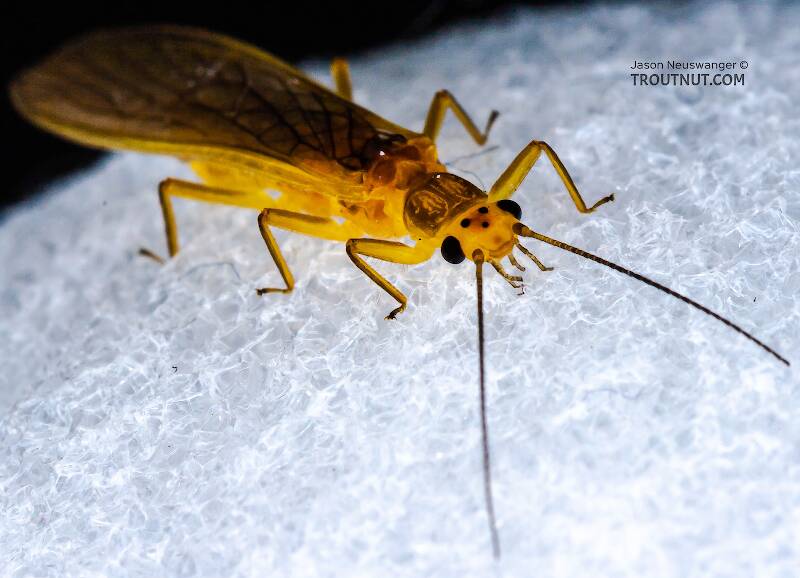
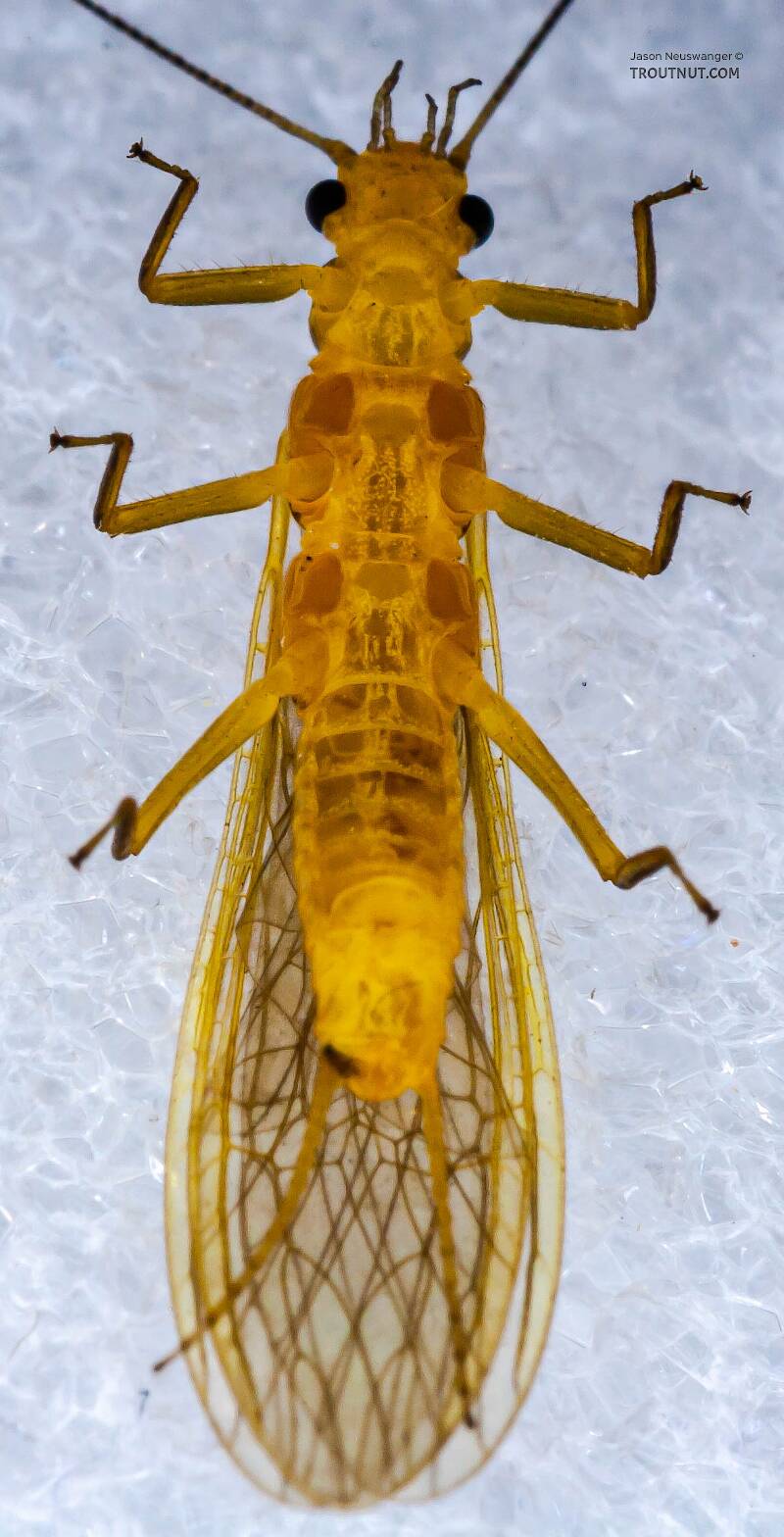
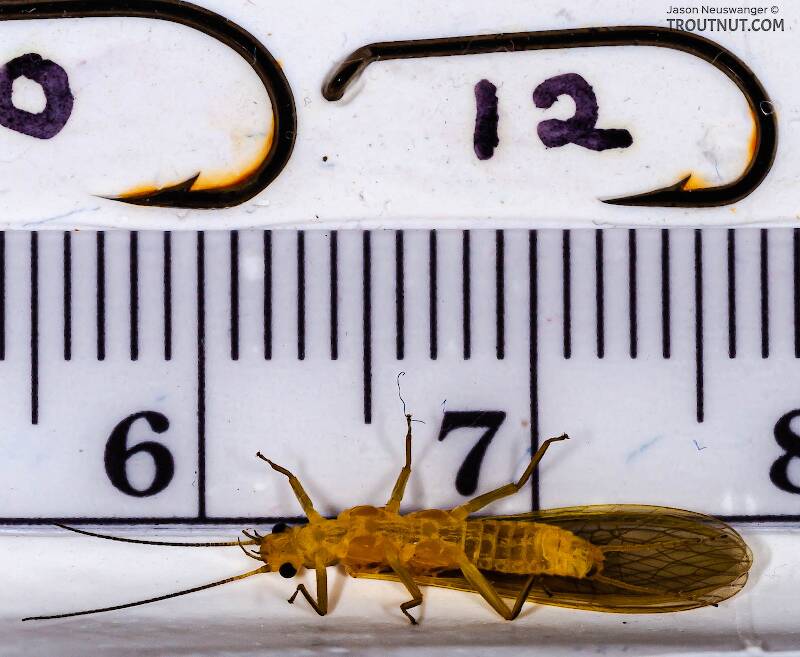
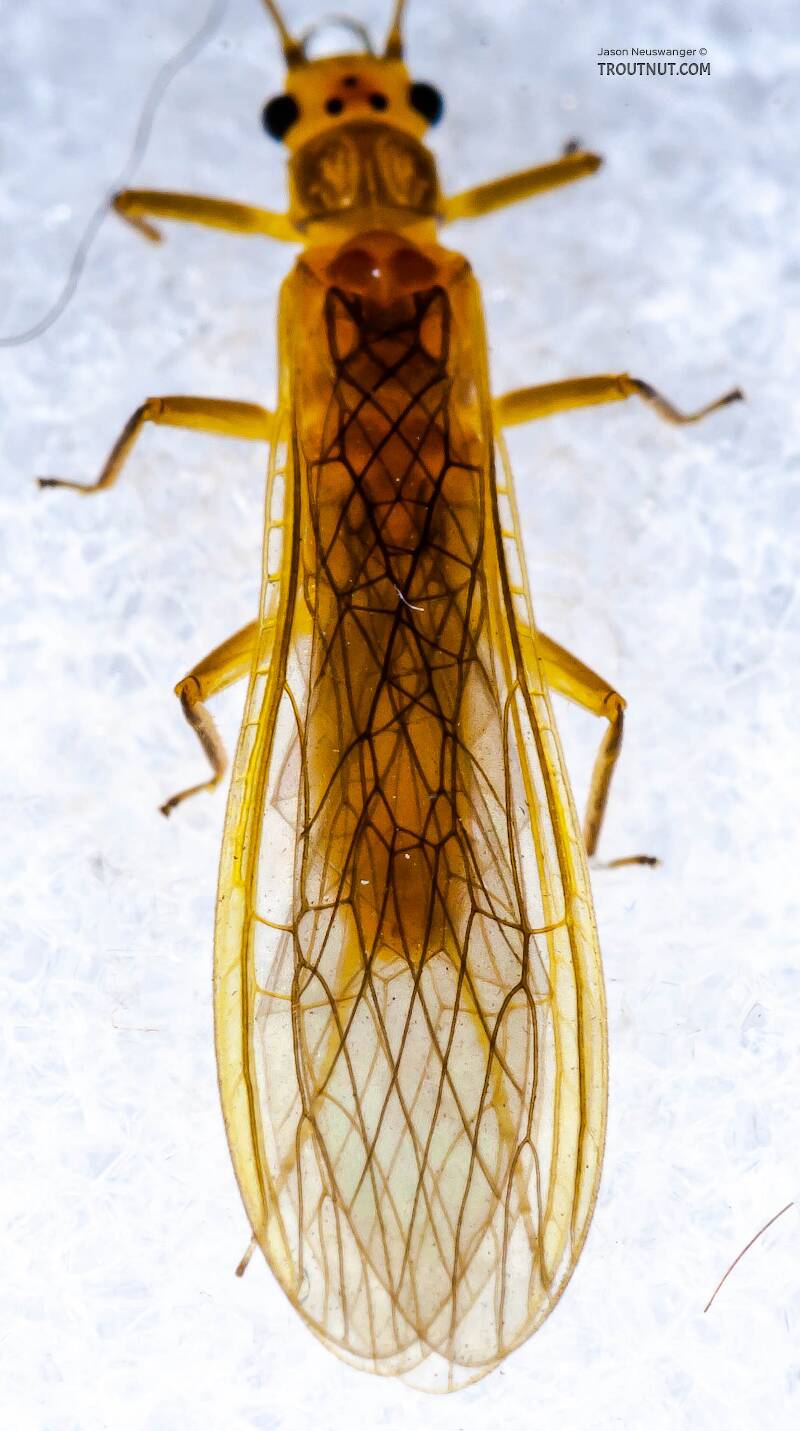
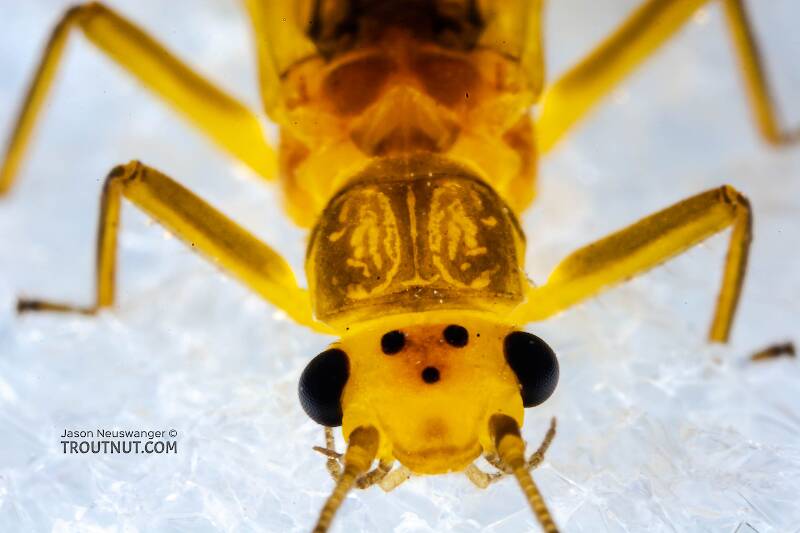
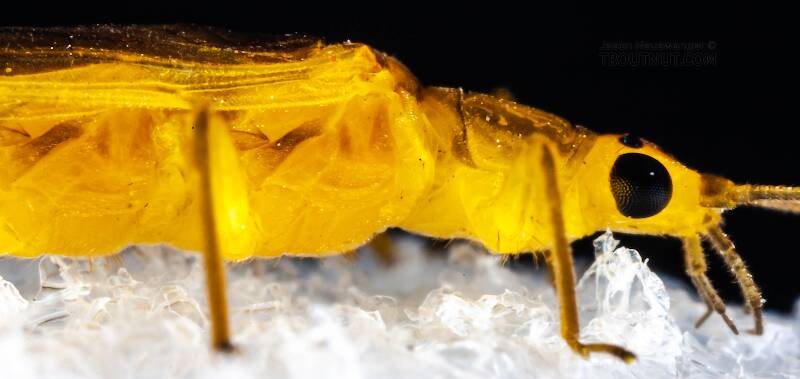
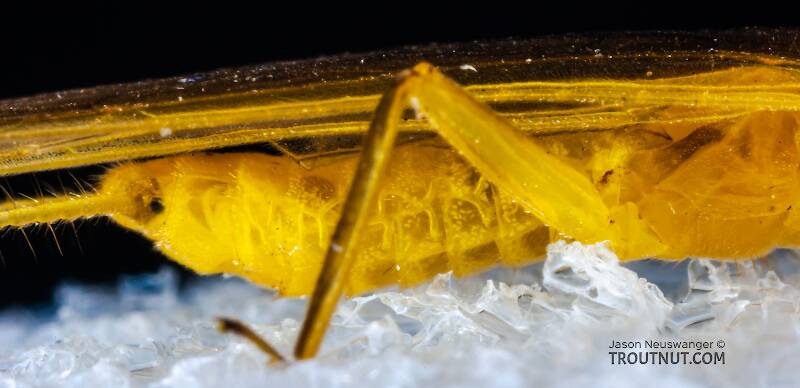
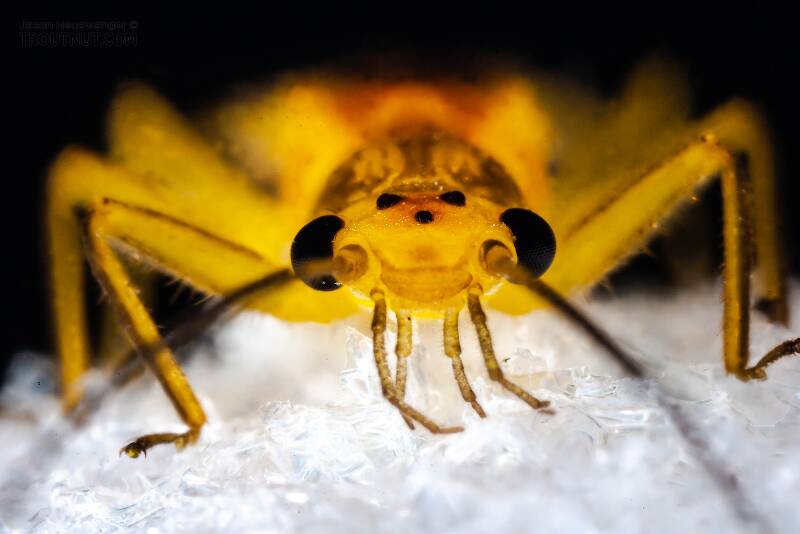
This stonefly was collected from Enfield Creek in New York on August 24th, 2006 and added to Troutnut.com by Troutnut on August 27th, 2006.
Discussions of this Adult
Probably Perlesta
Posted by GONZO on Sep 9, 2008
Last reply on Sep 9, 2008 by GONZO
I don't think this is Isoperla or even a perlodid. The little perlids of the genus Perlesta are frequently mistaken for Isoperla. Although there are a few exceptions, most Eastern Isoperla are spring or early summer emergers. Perlesta tends to be more of a summer emerger. In general appearance, the amber, brownish, or blackish wings with yellow borders are common to many Perlesta species. The nearly concolorous pronotum (often with a similar rugose pattern) and the variable darkening of the ocellar triangle are also typical of many species in this genus. Looking closer, the third photo shows long bristles along the lower front edge of the forefemur. As far as I know, these bristles are found in perlids and chloroperlids, but not in Isoperla.
Start a Discussion of Adult
References
- Baumann, Richard W. 1975. Revision of the Stonefly Family Nemouridae (plecoptera) : a Study Of The World Fauna At The Generic Level. Smithsonian Contributions to Zoology undef(211): 1-74.
Female Perlesta (Golden Stone) Stonefly Adult Pictures
Collection details
Location: Enfield Creek, New York
Date: August 24th, 2006
Added to site: August 27th, 2006
Author: Troutnut
Date: August 24th, 2006
Added to site: August 27th, 2006
Author: Troutnut

